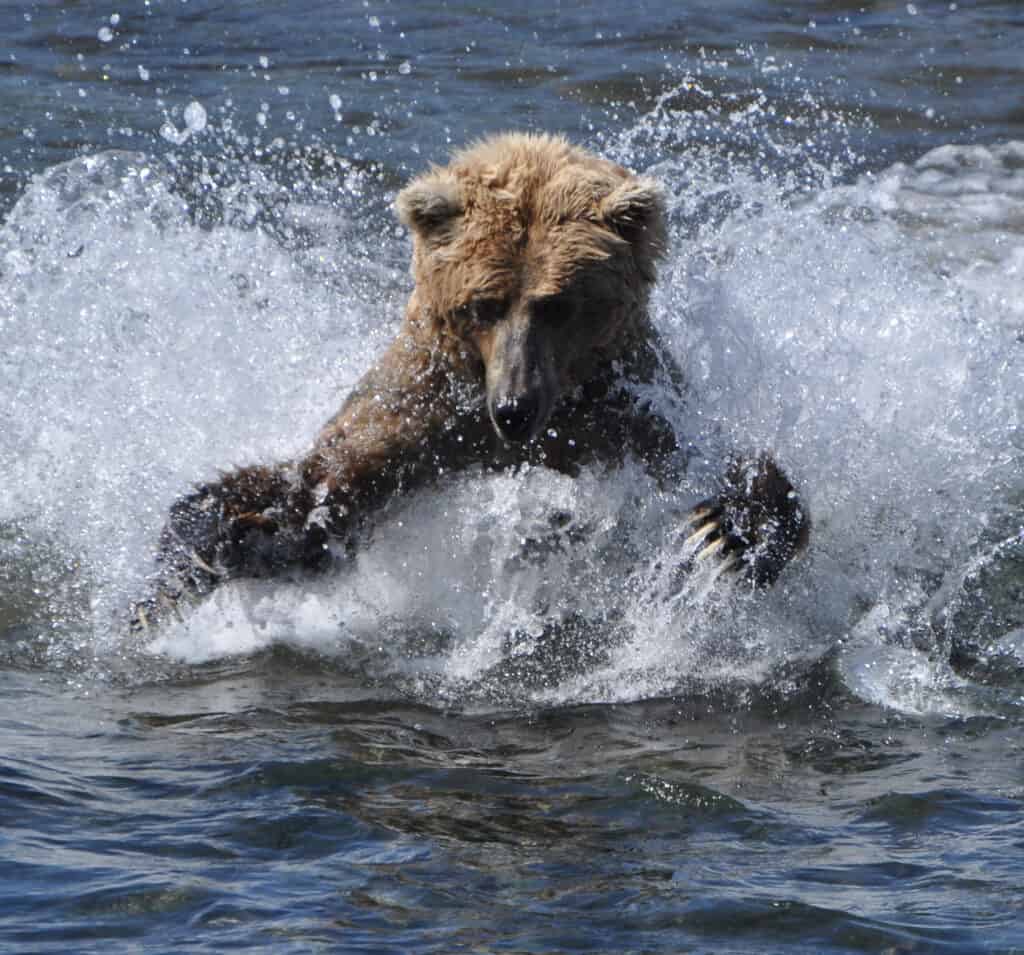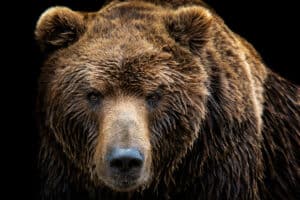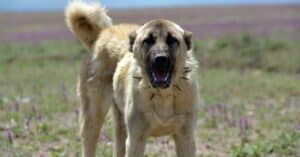If you did not know that grizzly bears can swim, this vid may be a bit shocking. It looks as if the bear is annoyed with the boat and is possibly chasing it away. Or, it may be curious and is coming over to investigate. Either way, it is a startling sight and a grizzly bear is not an animal that you would want climbing aboard your very small boat in a fast flowing river!
Check Out The Entire Video Below!
Spotting a Grizzly Bear
According to the US National Park Service, brown bears and grizzly bears are both names for the species Ursus arctos. However, we refer to the slightly larger bears that live in coastal areas of Alaska and have a fish-rich diet as brown bears. Whereas, the inland bears that don’t really eat marine sourced food and are a little smaller are referred to as grizzly bears. They are considered a subspecies (Ursus arctos horribilis) of brown bear. Both are larger than black bears which are a different species.

A grizzly bear’s high-fat content and oily coat helps them to float in water
©Antoni Murcia/Shutterstock.com
Brown bears have a few distinctive features that allow you to identify them. The most reliable is the prominent shoulder hump. This is actually a mass of muscle that they have developed to help them dig for food in the ground. They dig up the earth to look for roots and small rodents and this muscle helps them to be highly effective diggers! You may also notice that their rump is lower than their shoulder hump and their face profile sinks in between their eyes and the tip of their snout. Their ears are short and round.
Are Grizzlies Good Swimmers?
At times it looks like this bear may be struggling in the water but that is unlikely. Brown bears are generally excellent swimmers. You may think that their thick fur and heavy build would make them sink! Actually, their high-fat content and oily coat makes them very buoyant. However, they use a ‘doggy paddle’ stroke which is not very fast and uses up a lot of energy so they don’t get in the water for fun!
Bears enter the water primarily to reach food. This bear may have been trying to reach another patch of land where it thought it would find something to eat. Even if it was struggling, it is likely to float until it reaches a shore and will then climb out.
The photo featured at the top of this post is © Michal_K/Shutterstock.com
Thank you for reading! Have some feedback for us? Contact the AZ Animals editorial team.






